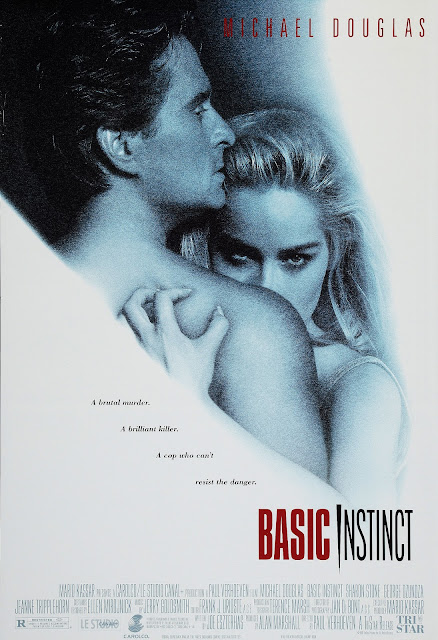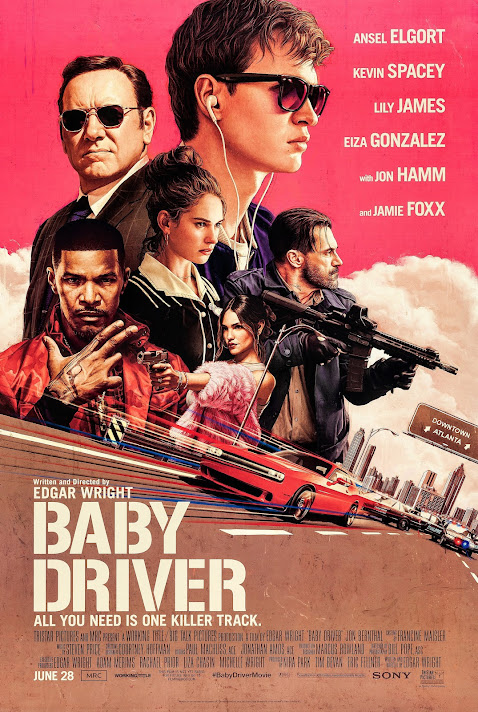Film Noir #6
Noir: Backfire, Basic Instinct, and The Beat Generation
BACKFIRE (1950) --- A moment in a most ordinary film noir can make the look-in worthwhile, like where a taxi pulls up to actual locale that was the Fremont Hotel in long gone section of L.A. called Bunker Hill. Its run-down remnant dressed a score of noirs through the 40’s and 50’s, a few even unto the 60’s, nary a trace left now, except on surviving film. Backfire was remnant too, of Warner Bros. coming off a studio era where money got expended on even weak pictures like this, director Vincent Sherman implored to make it even though the script was lifeless, “Do it for the team” an argument too often made. How enervating to take jobs you and “the team” know will turn out poor. “Confused and pointless,” said Sherman of Backfire, the director’s bargain with brass giving him The Hasty Heart next if he but held nose to finish Backfire.
Knowing this, why do I sit and watch Backfire today, let alone enjoy it? First is atmosphere 1950 took for granted, like Bunker Hill and other actuals that were photographed. There is story of sorts, confused yes, spread like chicken litter over what seems longer than 91 minutes. Gordon MacRae normally sang, not here. He showed up in the eighties to perform at our little community college. How might he have reacted if I went backstage to ask about Backfire? The “surprise” heavy is plain from the moment we meet him, as why would Dane Clark be in an otherwise puny part? Backfire was not of the Warner B unit, even as it skirts an edge of same. Where narrative is weak enough, at least give a happy finish so we won’t regret coming. Backfire has that in unlikely spades. One critic of the day said seeing it was like a visit to an old friend that is pleasant even though you know he will tell the same stories you’ve heard so often before. Did Backfire please for being so utterly routine? Being of “noir” category won’t excuse everything. Another coaster, I fear. How long before tabletop space runs out?
BASIC INSTINCT (1992) --- Much better than it seemed when new in 1992, and I wondered why. Maybe because shock value, like all shock value, must dissipate, especially where imitated or driven into clown corner because now we’re embarrassed for having once been shocked or impressed by it. Basic Instinct was of a piece with other detective yarns before and (especially) after. As to being noir, fair enough, even as “erotic thriller” was a label affixed at the time, acknowledged then as fresh, and invitation for others to emulate until parodies became greater in number than thrillers erotic or not. Basic Instinct had the advantage of lush production, a moody score, nods back to noir but stylish to point of abstraction, joy in which does not fade with passage of time. There is Frisco setting, welcome as it had not been since Bullitt and Vertigo, a reliable noir background from Dark Passage and The Maltese Falcon onward. Basic Instinct makes the now blighted city look inviting again, perhaps a last time it would be so for movies. Director Paul Verhoeven gave, still gives, unique energy to whatever he turns hand to. If “erotic thriller” was indeed a fresh invention, then it was his invention, plus writer, camera assist he got. Let the yarn confuse for it is always engaging to look at.
Central image of the icepick dominates … ill-advised sex leads inevitably to its application. The instrument even lies still beneath beds these characters occupy, a visual cue that they are doomed for having coupled. Movies punish for promiscuity as they always have. Basic Instinct makes sex easy for the getting, but waiters always bring the check, and Verhoeven’s are high. Explicit talk pushed envelopes for probably a last time here. Nothing much would surprise us after this. Intensity amuses now in a weren’t the nineties silly way, OK if look-back on the era is fond (surely for some it is), with quarters dropped in pay phones or analogish computers giving nostalgic glow. Casting gets unexpected hypo, funny man “Newman” (not meant to be) an interrogator for Sharon Stone’s R-earning Q&A, the moment that sold most tickets in 1992. The story by hot-then writer Joe Eszterhas has more twists than a barrel of snakes. A third less of these would make keeping up easier. I wondered at the time who the killer really was. I sort of still do. Basic Instinct has dynamism and hypnotic quality to wear well for those who know how 90’s games were played and still are amused by them. I see where Sharon Stone did a Basic Instinct 2 in 2006, which must have been agony for her and whoever watched. Seeing Stone in the trailer reminded me of Mae West. Fickle modern stardom, fleet then, the more so in a streaming now.
THE BEAT GENERATION (1959) --- Best of the Zugsmiths, which I declare not with cocked eyebrow, being surprised by how straight it plays, except when it wasn’t (beatnik stuff). Beats get a hammering, cast from Steve Cochran to heavy Ray Danton calling them phony and “pseudo-intellectual,” sort of a preview of how mainstreamers came to disdain hippies, except the hippies were more useful to a mainstream, at least where consumerism co-opted them, or pop music celebrated their otherness. The Beat Generation used a barely understood 50’s movement for what exploitation might be got, the Beats less about sex or attendant action than poseur poetry to slow violence the show was sold on. Beats made soft Establishment targets, Maynard G. Krebbs to exemplify them weekly on the Dobie Gillis show. For Zugsmith, they were mere branch to hang merchandising upon. He had an eye for casting, a barometer it seemed for how cult taste would run twenty and more years later.
Best of Beats is Vampira making with words pointless and sans rhyme, but her with a phone directory is OK in fan quarters. Vampira nee Nurmi was a sub-culture all her own. Steve Cochran gives a complex and fully committed performance, and I mean it, his character put through wringers both work and home-hearth generated (they merge when wife Fay Spain is victimized by sadist Danton). Spain is also fine. Players not appreciated enough could rise to occasion where material merited their fullest participation, and we can regret they didn’t get further and better opportunity to show wares. The Beat Generation was co-written by Richard Matheson, who was no one’s idea of hack. This was clearly a piece he put his heart to, however it was tempered by exploit elements and salacious selling. Irish McCalla is Jackie Coogan’s devoted domestic partner (insert exclamation here). She’s good too. So is Mamie Van Doren as a mark for faux rapist Jim Mitchum, a tool for devilish Danton except Jim falls for Mamie and can’t go through with it. Van Doren was limited by her lush looks, but I never saw her bad in a performance.
Did these players get together at Beat Generation’s start and pledge to let’s give it our best, as if this were a real movie that we might earn statuettes for. Pity they weren’t so rewarded, especially Steve. I speak as a fan of course. And who invited Charles Chaplin Jr. (as “Lover Boy”)? Impression is these people were to some extent hangers-on or pals with Zugsmith. If so, he sure picked abstract company. Norm Grabowski (annoying), Maxie Rosenbloom (more so), poor and played out Paul Cavanagh, who I dearly love. Then William Schallert with an uncredited bit that would never, ever pass under today’s Code. Add these imperishables to a story tense as taut wire. Was Ray Danton at least part-way as evil as characters he portrayed, or maybe being beset with an evil face made him do evil things, like Karloff’s “Bateman” in The Raven. My secret is out then … I adore The Beat Generation and am thrilled there is a Blu-Ray to splay across wide screens.

















































